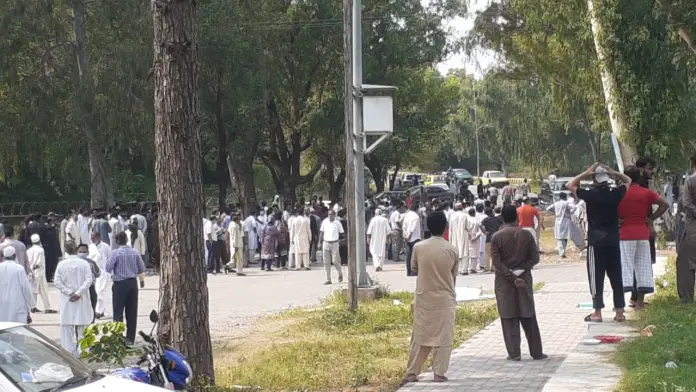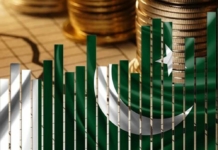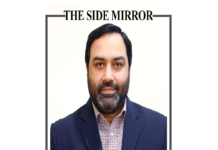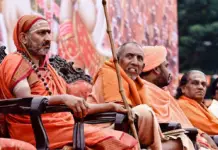Chinese communist revolutionary Mao Zedong’s warning reverberates even today, stating “a long revolution cannot be an extended dinner party”. Meaning thereby the revolutions inherently cannot be soft, kind or magnanimous, rather are characterized by long rigorous marches and struggles. Therefore, of all the political means of protest or pressing for a cause ‘long march’ is the most mythologized one, by political activists. The ‘long march’ in the last century, is primarily taken as a Chinese innovation for political struggle dating back to 1934 when Communist Party’s two hundred thousand activists executed a strategic retreat owing to attacks by Chinese nationalists. They moved out of their areas to traverse more than 10,000 miles of rigorous terrain, including mountains, grasslands, and swamps to make it possible, but at the cost of massive casualties en-route; only one-fifth survived the ordeal, ending up in March 1936, in the desolate north to lay down the basis of a new China and Mao Mao Zedong’s revolution.
The death toll was attributed to fate, hunger, disease and defection, despite all these hardships the hope managed to hold out and survive. The cause and effect of Chinese ‘long march’ is out of scope of this write up. But of course, we need to view the ‘long march’ in effect, both from spatial and temporal perspectives; the space it occupies and the perception of the passing time. The spatial dimension assumes priority as it is not only related to the distance traversed but also the translation of the cause of the march in public vernacular. It is overcoming physical distance and also creating a distance; sensitizing the masses about the world they had been living in and the world they should be living in the future.
Inspired by this creation of distance, the German sociologist Rudi Dutschke’s coined the phrase ‘long march through institutions’ around 1967. Circumnavigating the academic discussion, it is precisely the work required by the working class intelligentsia to develop a working class culture to effect a replacement of the dominant ideology, imposed by cultural hegemony of middle and upper classes in a society. The concept of the ‘long march’ through institutions was a Marxist concept, and was aimed at replacing the dominant culture enacted by institutions like religion, education, entertainment, civil service, marriage and family, with a revolutionary godless culture. In essence, challenging the cultural hegemony. Look around us, we may differ in our selection of institution from the above mentioned list but we all agree that we have a dominant ideology still prevalent in our society and mindsets despite three quarters of century of independence.
Consider the modern day international institutions at work to create this hegemony. Take into account staffing of three international organizations; International Monitory Fund (IMF), World Trade Organization (WTO) and United Nations Organization (UNO), in the last two decades. An analysis shall reveal four findings, one, that redistribution of staff positions from established (upper class) to emerging nations like Brazil, Russia, India and China (working class) has been minor. Two, these emerging nations are far less represented in the international secretariats of these organizations. Three, emerging nations representation in UNO rather declined and fourth, amongst the emerging nation India fared well as compared to Brazil and China, whereas Russia fared poorly. This can be viewed in the light of international relation theories. Therefore, this shows that hegemony of American and Europeans (the upper class) is far from over in these international organizations and hence their dominant ideology prevails.
Within the context of our own society, the foremost institution, which acts as the center of gravity is our religion, to which we remain bound but the variance in interpretation has often lead to sectarian strife. Tolerance for faiths, beliefs and practices still needs to be developed. Another important institution is the justice system, which still likes to bask in its colonial glory, observing summer vacations, as if justice is dispensed in time rest of the year. It still swings between the two extremes of ‘justice delayed is justice denied’ and ‘justice rushed is justice crushed’ and thus its lower echelons seem to be stagnant. Civil service is hugely affected by corruption and red taping. Education has devolved into a business center, with different curricula for affluent class and others. Any attempts to address the same are nullified, with in due course.
Blind following of western culture is now impinging on our family values to the extent that law making was required against disowning the parents. Most of these have been the electoral slogans of political parties in Pakistan, with no accountability of their delivery. Political uprisings on basis of religion, inherent right to rule and economic upheaval have been a feature of our political milieu. I strongly believe that these institutions have rather devolved. Evolution is not forthcoming, therefore, in my view they need a surgical intervention through revolutionary measures. Do we have the will and resolve for that? My readers are the best judge.
The ‘long march’ is an apt analogy for experiencing a long revolution which is not characterized by defeats or victories, neither it is a triumphant linear climb to a summit nor a casual walk down gradual slopes of the past, rather it is moving with a sense of direction and destination. We live in a deeply divided world in which one side is steeped in moral superiority, hurling profanities and own way of living on others, bringing in racism at will. On the other hand, there are people raising concerns on Islamophobia, white supremacy and a plethora of other evils. Don’t we still need a ‘long march’ through local and international institutions to bring in the much-needed change, peace, empathy, equality and prosperity to our societies and to the world.







